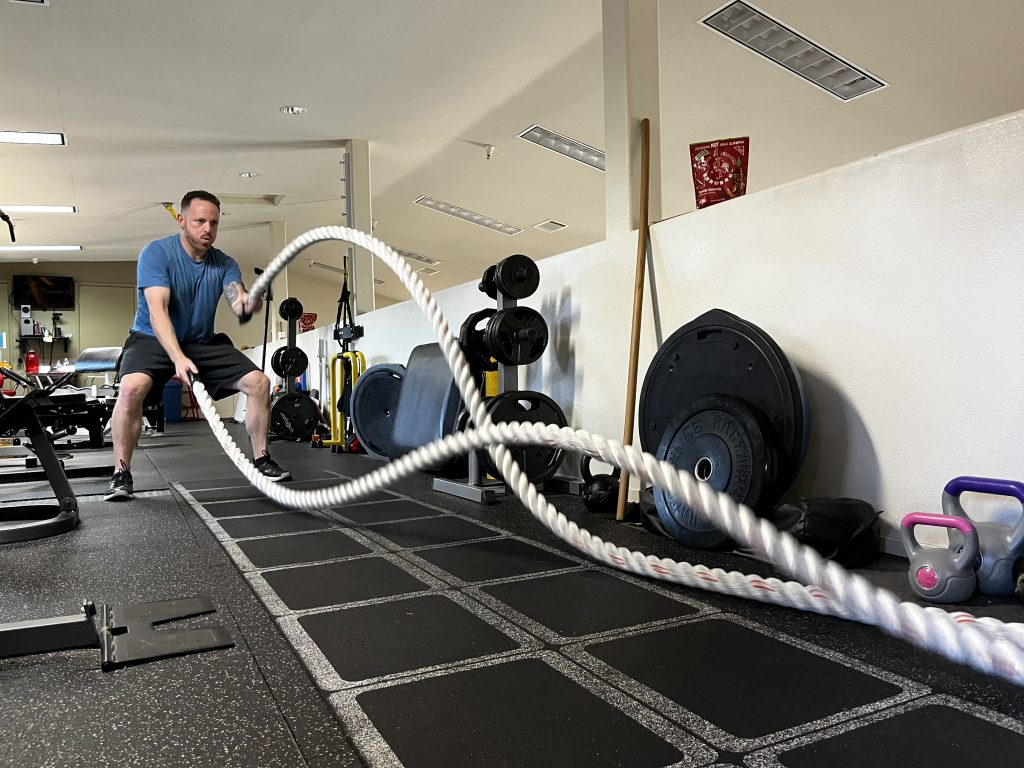Building muscle is a multifaceted endeavor that involves strategic planning, discipline, and the right knowledge. Whether you’re a beginner looking to get started or an experienced lifter aiming to break through a plateau, selecting the right muscle-building program is crucial for achieving your goals. This comprehensive guide will cover the key considerations in choosing a muscle-building program tailored to your individual objectives, including an understanding of basic principles, program types, nutrition, recovery, and common pitfalls.
Understanding Muscle Building Principles
Hypertrophy Basics
Hypertrophy, the enlargement of muscle fibers, is the primary goal of muscle-building programs. This process is stimulated by resistance training and involves three main mechanisms:
- Mechanical Tension: The force exerted on muscles during lifting.
- Metabolic Stress: The accumulation of metabolic byproducts (e.g., lactate) during intense exercise.
- Muscle Damage: Microscopic tears in muscle fibers, repaired by the body to become stronger and bigger.
Progressive Overload
Progressive overload is the gradual increase of stress placed upon the body during exercise. To continue building muscle, you must continually challenge your muscles by increasing the weight, repetitions, or intensity of your workouts.
Volume, Intensity, and Frequency
- Volume: The total amount of work performed, typically measured in sets and reps.
- Intensity: The amount of weight lifted relative to your one-rep max (1RM).
- Frequency: How often you train a particular muscle group each week.
Balancing these factors is essential for an effective muscle-building program.
Assessing Your Goals
Short-Term vs. Long-Term Goals
Identify whether your goals are short-term (e.g., preparing for an event) or long-term (e.g., overall strength and muscle development). Short-term goals might require more intensive, specific programs, while long-term goals benefit from sustainable, balanced training approaches.
Specificity of Goals
Be specific about what you want to achieve:
- Strength: Focus on lifting heavier weights.
- Size (Hypertrophy): Emphasize higher volume and moderate weights.
- Endurance: Incorporate higher reps and lower weights.
Understanding your primary goal will help in selecting the appropriate program.
Types of Muscle Building Programs
Full-Body Programs
Full-body workouts involve training all major muscle groups in a single session, typically performed 2-4 times per week. These programs are ideal for beginners, time-constrained individuals, or those looking for a balanced approach.
Pros:
- Efficient use of time.
- More frequent stimulation of each muscle group.
- Suitable for beginners to intermediate lifters.
Cons:
- Can be demanding on recovery.
- May limit volume per muscle group in a single session.
Split Programs
Split routines divide the body into specific muscle groups trained on different days (e.g., push/pull/legs, upper/lower). This allows for higher volume per session for each muscle group.
Pros:
- Greater focus and volume per muscle group.
- Better recovery for individual muscle groups.
Cons:
- Requires more training days.
- Less frequent overall muscle stimulation.
Push/Pull/Legs (PPL)
The PPL routine splits workouts into pushing exercises (chest, shoulders, triceps), pulling exercises (back, biceps), and leg exercises. Typically, these are cycled 2-3 times per week.
Pros:
- Balanced focus on all major muscle groups.
- Flexible and customizable.
Cons:
- Can be demanding with higher frequency.
- Requires careful management of volume and intensity.
Upper/Lower Split
The upper/lower split divides workouts into upper body and lower body days, usually performed 4 days per week.
Pros:
- Balanced training approach.
- Ample recovery time.
Cons:
- May require more days in the gym than full-body workouts.
- Potential for fatigue with high volume.
Body Part Splits
Body part splits focus on one or two muscle groups per session, typically spread over 5-6 days.
Pros:
- Maximum focus on specific muscles.
- High volume for each muscle group.
Cons:
- Requires a significant time commitment.
- Less frequent overall muscle stimulation.
Designing Your Program
Determining Your Experience Level
- Beginner: Less than 1 year of consistent training.
- Intermediate: 1-3 years of consistent training.
- Advanced: More than 3 years of consistent training.
Setting Realistic Expectations
Understand the rate of muscle gain. Beginners might gain 1-1.5% of their body weight in muscle per month, intermediates around 0.5-1%, and advanced lifters even less. Setting realistic goals will help maintain motivation and adherence to the program.
Customizing for Individual Needs
Consider factors like age, gender, lifestyle, and physical limitations. Personalization ensures the program is sustainable and reduces the risk of injury.
Program Components
Warm-Up and Mobility
A proper warm-up increases blood flow, enhances muscle elasticity, and prepares the nervous system for exercise. Incorporate dynamic stretches and mobility exercises to prevent injuries and improve performance.
Exercise Selection
Choose compound movements (e.g., squats, deadlifts, bench press) for maximum muscle recruitment and efficiency. Accessory exercises (e.g., curls, tricep extensions) target specific muscles and address weaknesses.
Volume and Intensity
Balance volume and intensity based on your goals and experience. Beginners might start with 2-3 sets per exercise, while advanced lifters might perform 4-6 sets.
Progression Strategies
Use linear progression (increasing weight consistently) or periodization (varying intensity and volume) to prevent plateaus and ensure continuous progress.
Rest Periods
Rest periods affect performance and recovery. For hypertrophy, 60-90 seconds between sets is typical. For strength, longer rest periods (2-5 minutes) are necessary.

Nutrition for Muscle Building
Macronutrient Breakdown
- Protein: Essential for muscle repair and growth. Aim for 1.6-2.2 grams per kilogram of body weight per day.
- Carbohydrates: Provide energy for intense workouts. Consume 4-6 grams per kilogram of body weight per day.
- Fats: Necessary for hormone production and overall health. Aim for 0.8-1 gram per kilogram of body weight per day.
Meal Timing
Spread protein intake evenly across meals to maximize muscle protein synthesis. Consume a balanced meal with protein, carbs, and fats 1-2 hours before and after workouts.
Supplements
- Protein Powder: Convenient way to meet protein needs.
- Creatine: Enhances strength and muscle mass.
- Branched-Chain Amino Acids (BCAAs): May help reduce muscle soreness and promote recovery.
- Beta-Alanine: Improves muscular endurance.
Hydration
Proper hydration is crucial for performance and recovery. Aim for at least 3-4 liters of water per day, adjusting for sweat loss and activity level.
Recovery and Rest
Importance of Sleep
Sleep is vital for muscle recovery and growth. Aim for 7-9 hours of quality sleep per night.
Active Recovery
Incorporate light activities (e.g., walking, yoga) on rest days to promote blood flow and reduce muscle soreness.
Stress Management
Chronic stress can hinder muscle growth. Use relaxation techniques (e.g., meditation, deep breathing) to manage stress effectively.
Tracking Progress
Performance Metrics
Track weights, sets, and reps to monitor strength gains and progression. Use a training log or app to record your workouts.
Body Measurements
Regularly measure key areas (e.g., chest, arms, legs) to track muscle growth. Take photos to visually assess changes over time.
Adjusting the Program
Based on progress and feedback, adjust your program periodically. Increase volume or intensity, change exercises, or incorporate new techniques to continue making gains.
Common Pitfalls and Solutions
Overtraining
Overtraining can lead to injuries and hinder progress. Ensure adequate recovery and avoid excessive volume or intensity.
Poor Nutrition
Inadequate nutrition can stall muscle growth. Follow a balanced diet tailored to your goals and monitor your macronutrient intake.
Inconsistent Training
Consistency is key to muscle growth. Stick to your program and maintain regular training sessions.
Lack of Progression
Failure to progressively overload muscles will result in stagnation. Regularly challenge yourself with increased weights, reps, or intensity.
Conclusion
Choosing the right muscle-building program involves understanding the principles of hypertrophy, assessing your specific goals, and tailoring your training, nutrition, and recovery strategies. Whether you’re a beginner or an advanced lifter, a well-designed program will set you on the path to achieving your muscle-building aspirations. Stay consistent, monitor your progress, and be willing to adapt your approach as needed to ensure continuous improvement and success.

Unlock Your Strength with Custom Muscle-Building Plans at Fitness Ellipsis!
Are you ready to embark on a journey towards a stronger, more powerful physique? At Fitness Ellipsis, we believe that building muscle is not just about lifting weights—it’s about gaining strength, vitality, and confidence. Our expert team is dedicated to crafting personalized fitness plans that align with your unique body needs and muscle-building goals.
Whether you’re a beginner or an experienced fitness enthusiast, our comprehensive approach ensures you get the support, guidance, and motivation you need to succeed. From tailored workout routines to nutritional advice, we cover all aspects of muscle growth to help you achieve and maintain your ideal physique.
Don’t wait to transform your body. Join the Fitness community today and start your path to a stronger, healthier you. Contact us at Fitness Ellipsis to learn more and take the first step towards effective muscle building. Your journey to strength begins now!




